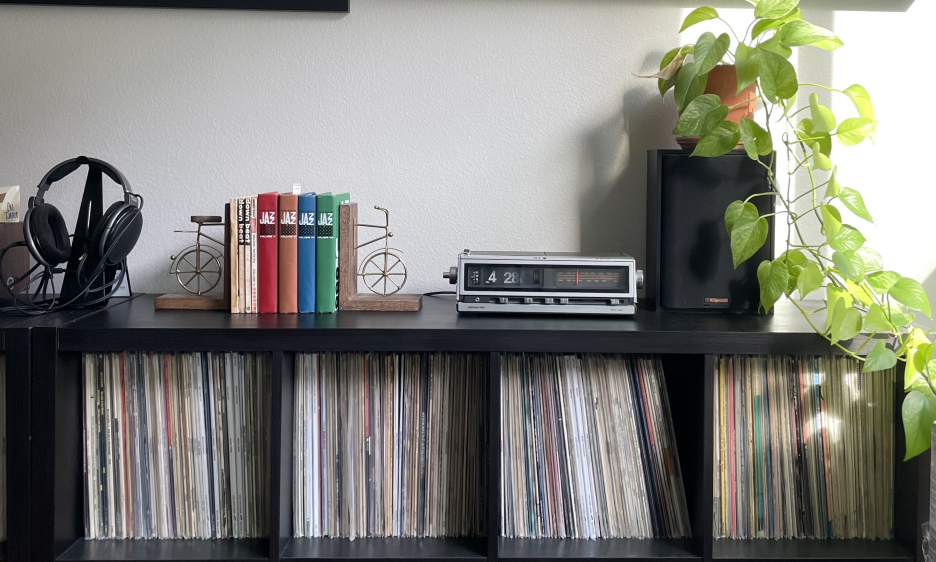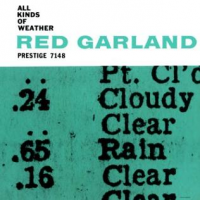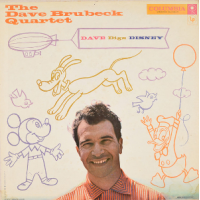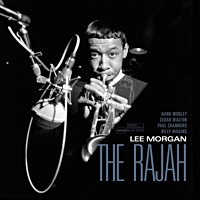Home » Jazz Articles » What is Jazz? » Back In The Groove: Material Matters
Back In The Groove: Material Matters

Courtesy Tarik Townsend
Musical material can lead players into some fascinating places normally not tread by anyone else—including themselves.
 An aspect of jazz that is often overlooked is the material. That is, the very tunes that the musicians are performing. Arguably more important than the key or the tempo, the song itself dictates where the musician's inspiration will go, and even that isn't always a sure thing. They're a launching pad and an indicator of an artist's imagination. The material can also lead the players into some fascinating places normally not tread by anyone else—including themselves. Some recent records spun on the hifi drove this point home and resulted in a thought-provoking and enjoyable listening session.
An aspect of jazz that is often overlooked is the material. That is, the very tunes that the musicians are performing. Arguably more important than the key or the tempo, the song itself dictates where the musician's inspiration will go, and even that isn't always a sure thing. They're a launching pad and an indicator of an artist's imagination. The material can also lead the players into some fascinating places normally not tread by anyone else—including themselves. Some recent records spun on the hifi drove this point home and resulted in a thought-provoking and enjoyable listening session. One of jazz's best qualities is its ability to make almost anything sound good. When pianist Red Garland needed to make yet another album for Prestige, he turned to an unlikely source: A concept album built around... the weather. Choosing a handful of weather-associated tunes, most of them jazz standards in their own right, Garland's All Kinds of Weather gave the pianist the chance to reinterpret them into swinging, classic jazz. Aided by Paul Chambers' authoritative bass and Art Taylor's brushwork, what could have been a trivial gimmick of a record becomes a solid piece of work. But then again, Garland's sumptuous block chords and dancing piano lines are perfect for tunes like "Winter Wonderland" and "Rain," while his version of "'Tis Autumn" is just as grand and glorious as a stroll through the countryside in October.
 A jazz album built around the weather may have been mild intriguing when it hit shelves in 1959, but a jazz album of Disney songs would have been more than a mere novelty. But novel ideas came naturally to Dave Brubeck, and his 1957 record Dave Digs Disney is an example of this. Is this Brubeck's greatest album of all time? It may be blasphemous, it may be unpopular, and it may be crazy, but the answer might be yes.
A jazz album built around the weather may have been mild intriguing when it hit shelves in 1959, but a jazz album of Disney songs would have been more than a mere novelty. But novel ideas came naturally to Dave Brubeck, and his 1957 record Dave Digs Disney is an example of this. Is this Brubeck's greatest album of all time? It may be blasphemous, it may be unpopular, and it may be crazy, but the answer might be yes. This album holds within its grooves everything Brubeck and his quartet stood for. The unorthodox time signatures, foreign (for jazz) musical material, classical undertones, radical reharmonizations... it's all here. Inspired by a family trip to Disneyland, Brubeck's album was in many ways more scandalous and groundbreaking than Time Out ever was. "Someday My Prince Will Come" finds drummer Joe Morello playing a conventional beat in a waltzing 3/4 rhythm during Paul Desmond's alto sax solo, but he then switches to a fleet swing rhythm in 4/4 while bassist Norman Bates (yep) remains in three. With this polyrhythmic foundation, Brubeck gets progressively more far-out and convoluted during his solo, making this a much more thrilling case study in multi-rhythmic improvisation than the comparatively tame (sterile?) music on Time Out.
 Then there's the phenomenal improvised counterpoint between Desmond and Brubeck on "Give A Little Whistle," both musicians spontaneously reeling off some of the hottest fugues this side of Bach. And check out Brubeck's rich reharmonization on "When You Wish Upon A Star," proving that Disney's tunes weren't as square as everyone assumed. Playing the melody over a shifting canvas of chords, Brubeck hits us with chord after atonal chord that sounds as modern as anything being played today. This record, as well as Garland's, are good examples of artists elevating the material by imbuing it with their own personalities. But what happens when the opposite happens? What happens when the musicians are influenced by the material? Enter Lee Morgan's album The Rajah.
Then there's the phenomenal improvised counterpoint between Desmond and Brubeck on "Give A Little Whistle," both musicians spontaneously reeling off some of the hottest fugues this side of Bach. And check out Brubeck's rich reharmonization on "When You Wish Upon A Star," proving that Disney's tunes weren't as square as everyone assumed. Playing the melody over a shifting canvas of chords, Brubeck hits us with chord after atonal chord that sounds as modern as anything being played today. This record, as well as Garland's, are good examples of artists elevating the material by imbuing it with their own personalities. But what happens when the opposite happens? What happens when the musicians are influenced by the material? Enter Lee Morgan's album The Rajah. Recorded in 1966 for the legendary Blue Note label, the music is rather atypical for both Lee Morgan and Blue Note. At this point in the 1960s, Blue Note Records had a very identifiable sound. Gritty, brooding, funky, groovy, and dark, the record label and its recording artists almost never deviated from this blueprint. Trumpeter Lee Morgan was known for his sassy, brassy, extroverted sound as well as his gift for writing finger-popping tunes to match, all of which served Blue Note particularly well. And yet, in the midst of his successful The Sidewinder and the firmly Blue Note-esque DelightfuLee, Morgan stepped into the studio with a powerful group and taped a handful of tunes that resulted in a very unique session for all involved.
A glance at the first track on the album is enough to tip off the listener that something unusual is afoot. "A Pilgrim's Funny Farm," written by a cat named Cal Massey, may have an unusual title but its melody and harmonic underpinnings are lovely. With its sunny disposition and modal-adjacent chord changes, the song spurs Morgan, along with tenor saxophonist Hank Mobley and pianist Cedar Walton, into some of their most gentle, lush work of the decade. Supporting their playing is our friend Paul Chambers once again on bass and a subdued Billy Higgins on drums, who remains firmly in a foundational role, never taking as much as a four-bar break. Morgan in particular seems to be in an unusually introspective mood; gone is his characteristic swagger, replaced instead with probing introversion. A luxuriant bossa nova "Davisamba" and a foot-tapping "Is That So?" further cement the upbeat nature of the session. There is a hard-driving "Once In A Lifetime" as well as the album's title track and the session's obligatory Latin number "The Rajah," a minor-tinged blues, but overall this is an incredibly merry record. Unfortunately, the session remained in the vaults for almost two decades before it was finally issued on record in the mid—1980s, and then handsomely reissued by Blue Note in their Tone Poet series. Perhaps producer and Blue Note owner Alfred Lion thought it so outside Morgan's (and Blue Note's) normal oeuvre that he opted to hold it back.
All three records are great examples of how artists can potentially react and interact with unorthodox material. The results may be amusing but solidly standard (Garland), revolutionary and thrilling (Brubeck), or transformative and stimulating (Morgan). One thing it will never be? Boring.
Comments
Tags
What is Jazz?
lee morgan
Tarik Townsend
Red Garland
Paul Chamber's
Art Taylor's
Dave Brubeck
Joe Morello
Paul Desmond's
Norman Bates
Lee Morgan's
Hank Mobley
Cedar Walton
Paul Chambers
Billy Higgins
For the Love of Jazz
 All About Jazz has been a pillar of jazz since 1995, championing it as an art form and, more importantly, supporting the musicians who create it. Our enduring commitment has made "AAJ" one of the most culturally important websites of its kind, read by hundreds of thousands of fans, musicians and industry figures every month.
All About Jazz has been a pillar of jazz since 1995, championing it as an art form and, more importantly, supporting the musicians who create it. Our enduring commitment has made "AAJ" one of the most culturally important websites of its kind, read by hundreds of thousands of fans, musicians and industry figures every month.























